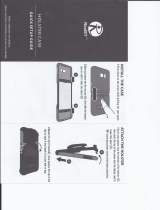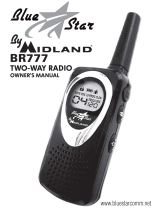
Safety and General Information
7
• Institute of Electrical and Electronic Engineers (IEEE) C95.1-1999 Edition
• International Commission on Non-Ionizing Radiation Protection (ICNIRP) 1998
• Ministry of Health (Canada) Safety Code 6. Limits of Human Exposure to Radio Frequency Electromagnetic
Fields in the Frequency Range from 3 kHz to 300 GHz, 1999
• Australian Communications Authority Radiocommunications (Electromagnetic Radiation - Human
Exposure) Standard 2001 (applicable to wireless phones only)
• ANATEL, Brasil Regulatory Authority, Resolution 256 (April 11, 2002) “additional requirements for SMR,
cellular, and PCS product certification.”
To assure optimal radio performance and make sure human exposure to radio frequency electromagnetic energy
is within the guidelines set forth in the above standards, always adhere to the following procedures.
Portable Radio Operation and EME Exposure
Antenna Care
Use only the supplied or an approved replacement antenna.
Unauthorized antennas, modifications, or
attachments could damage the radio and may violate FCC regulations.
DO NOT hold the antenna when the radio is “IN USE.”
Holding the antenna affects the effective range.
Two-Way Radio Operation
When using your radio as a traditional two-way radio,
hold the radio in a vertical position
with the microphone 1 to 2 inches (2.5 to 5 cm) away from the lips
.
Safety and General Information
8
Body-Worn Operation
To maintain compliance with FCC/Health Canada RF exposure guidelines, if you wear a radio on your body
when transmitting, always place the radio in a Motorola-supplied or approved clip, holder, holster, case, or body
harness for this product. Use of non-Motorola-approved accessories may exceed FCC/Health Canada RF
exposure guidelines. If you do not use one of the Motorola-supplied or approved body-worn accessories, and
are not using the radio held in the normal use position,
ensure the radio and its antenna are at least 1 inch
(2.5 cm) from your body when transmitting
.
Data Operation
If applicable, when using any data feature of the radio with or without an accessory cable,
position the radio
and its antenna at least 1 inch (2.5 cm) from the body
.
Approved Accessories
For a list of approved Motorola accessories visit our website at
www.motorola.com
.
Electromagnetic Interference/Compatibility
Note: Nearly every electronic device is susceptible to electromagnetic interference (EMI) if inadequately
shielded, designed, or otherwise configured for electromagnetic compatibility.
Facilities
To avoid electromagnetic interference and/or compatibility conflicts, turn off your radio in any facility where
posted notices instruct you to do so. Hospitals or health care facilities may be using equipment that is sensitive
to external RF energy.






















